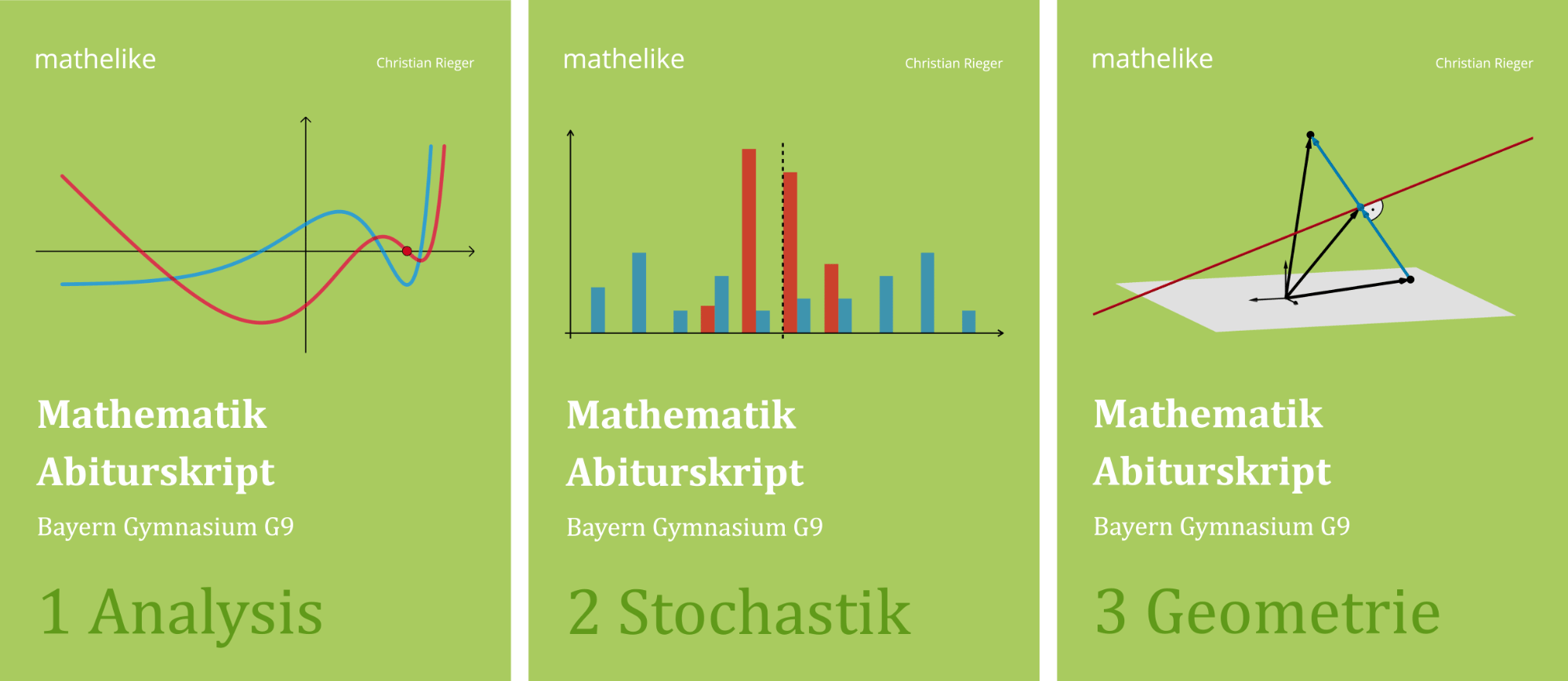Die Varianz von \(Y\) ist gleich \(\frac{11}{8}\).
Bestimmen Sie die Werte von \(a\) und \(b\).
(5 BE)
Lösung zu Teilaufgabe 3b
Die Aufgabenstellung gibt die Bedingung \(Var(Y) = \frac{11}{8}\) vor.
Außerdem gilt: Die Summe der Wahrscheinlichkeiten aller Werte \(k\) der Zufallsgröße \(Y\) ist gleich Eins.
\[Var(Y) = \frac{11}{8}\]
\[\sum P(Y = k) = 1\]
Aus den beiden Bedingung lässt sich jeweils eine Gleichung für die zu bestimmenden Werte der Wahrscheinlichkeiten \(a\) und \(b\) formulieren.
Ist \(X\) eine Zufallsgröße, deren mögliche Werte \(x_{1}, x_{2}, ..., x_{n}\) sind, dann gilt:
Varianz \(\boldsymbol{Var(X)}\) der Zufallsgröße \(\boldsymbol{X}\)
\[\begin{align*}Var(X) \enspace = \quad &\sum \limits_{i\;=\;1}^{n} (x_{i} - \mu)^{2} \cdot P(X = x_{i}) \\[0.8em] \enspace = \quad &(x_{1} - \mu)^{2} \cdot P(X = x_{1}) + (x_{2} - \mu)^{2} \cdot P(X = x_{2}) + \dots \\[0.8em] + \; &(x_n - \mu)^2 \cdot P(X = x_n)\end{align*}\]
Die Varianz \(\boldsymbol{Var(X)}\) einer Zufallsgröße \(X\) ist eine Maßzahl für die Streuung der Werte \(x_{i}\) der Zufallsgröße um den Erwartungswert \(\mu\).
\(\textcolor{#cc071e}{\mu = E(Y) = 2}\) (vgl. Teilaufgabe 3a)
| \(\textcolor{#89ba17}{k}\) | \(\textcolor{#89ba17}{0}\) | \(\textcolor{#a9ba17}{1}\) | \(\textcolor{#89ba17}{2}\) | \(\textcolor{#89ba17}{3}\) | \(\textcolor{#89ba17}{4}\) |
| \(\textcolor{#e9b509}{P(Y = k)}\) | \(\textcolor{#e9b509}{a}\) | \(\textcolor{#e9b509}{b}\) | \(\textcolor{#e9b509}{\frac{3}{8}}\) | \(\textcolor{#e9b509}{b}\) | \(\textcolor{#e9b509}{a}\) |
\[\begin{align*}Var(Y) &= (\textcolor{#89ba17}{0} - \textcolor{#cc071e}{2})^{2} \cdot \textcolor{#e9b509}{a} + (\textcolor{#89ba17}{1} - \textcolor{#cc071e}{2})^{2} \cdot \textcolor{#e9b509}{b} + (\textcolor{#89ba17}{2} - \textcolor{#cc071e}{2})^{2} \cdot \textcolor{#e9b509}{\frac{3}{8}} + (\textcolor{#89ba17}{3} - \textcolor{#cc071e}{2})^{2} \cdot \textcolor{#e9b509}{b} + (\textcolor{#89ba17}{4} - \textcolor{#cc071e}{2})^{2} \cdot \textcolor{#e9b509}{a} \\[0.8em] &= 4a + b + b + 4a \\[0.8em] &= 8a + 2b \end{align*}\]
Mit \(Var(Y) = \frac{11}{8}\) folgt:
\[8a + 2b = \frac{11}{8}\quad \enspace \text{(Gleichung I)}\]
| \(k\) | \(0\) | \(1\) | \(2\) | \(3\) | \(4\) |
| \(\textcolor{#e9b509}{P(Y = k)}\) | \(\textcolor{#e9b509}{a}\) | \(\textcolor{#e9b509}{b}\) | \(\textcolor{#e9b509}{\frac{3}{8}}\) | \(\textcolor{#e9b509}{b}\) | \(\textcolor{#e9b509}{a}\) |
\[\begin{align*}\sum P(Y = k) &= \textcolor{#e9b509}{a + b + \frac{3}{8} + b + a} \\[0.8em] &= 2a + 2b + \frac{3}{8}\end{align*}\]
Mit \(\sum P(Y = k) = 1\) folgt:
\[\begin{align*} 2a + 2b + \frac{3}{8} &= 1 &&| - \frac{3}{8} \\[0.8em] 2a + 2b &= \frac{5}{8}&& \text{(Gleichung II)} \end{align*}\]
Es ergibt sich ein lineares Gleichungssystem, das sich beispielsweise mit dem Additionsverfahren lösen lässt (hier Subtraktion).
\[\begin{align*} \text{I} & & & 8a + 2b = \frac{11}{8} \\[0.8em] \text{II} & & \wedge \enspace & 2a + 2b = \frac{5}{8} \end{align*}\]
\[\begin{align*}\text{II}\; - \;\text{I}\,\colon \enspace 8a - 2a + 2b - 2b &= \frac{11}{8} - \frac{5}{8}\\[0.8em] 6a &= \frac{6}{8} &&| : 6 \\[0.8em] a &= \frac{1}{8} \end{align*}\]
\[\begin{align*}a = \frac{1}{8}\; \text{in II}\,\colon \enspace 2 \cdot \frac{1}{8} + 2b &= \frac{5}{8} \\[0.8em] \frac{2}{8} + 2b &= \frac{5}{8} &&| - \frac{2}{8} \\[0.8em] 2b &= \frac{3}{8} &&| : 2 \\[0.8em] b &= \frac{3}{16} \end{align*}\]


